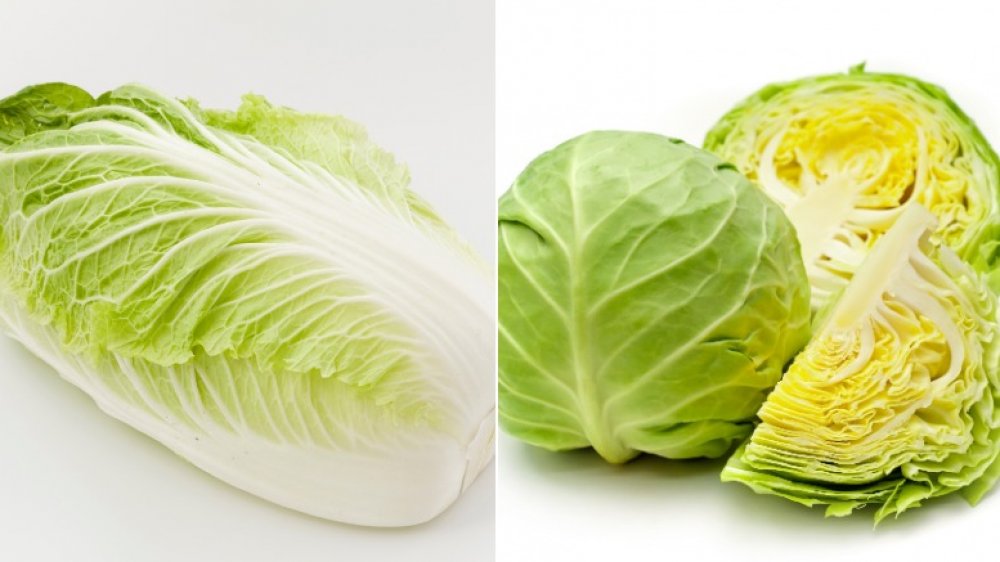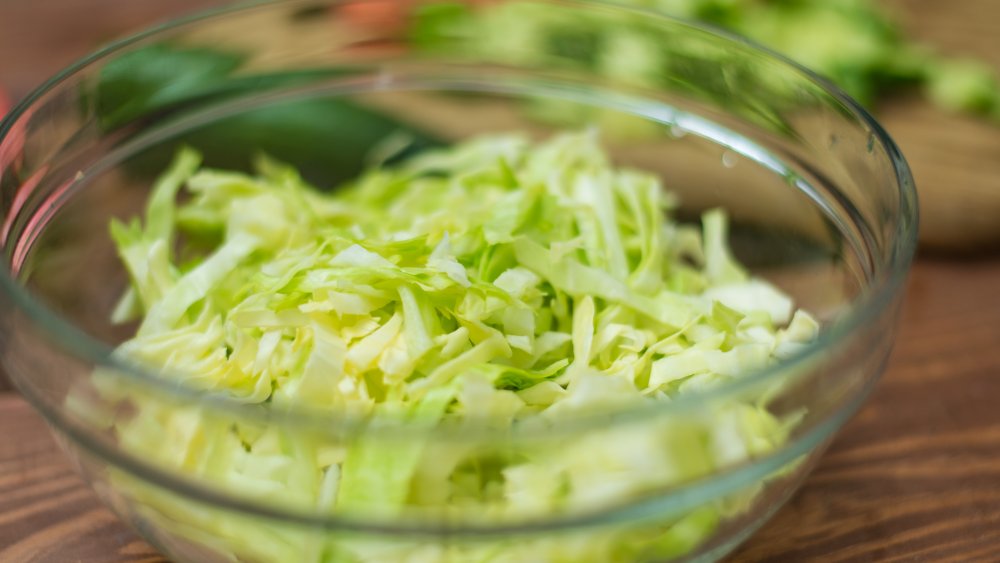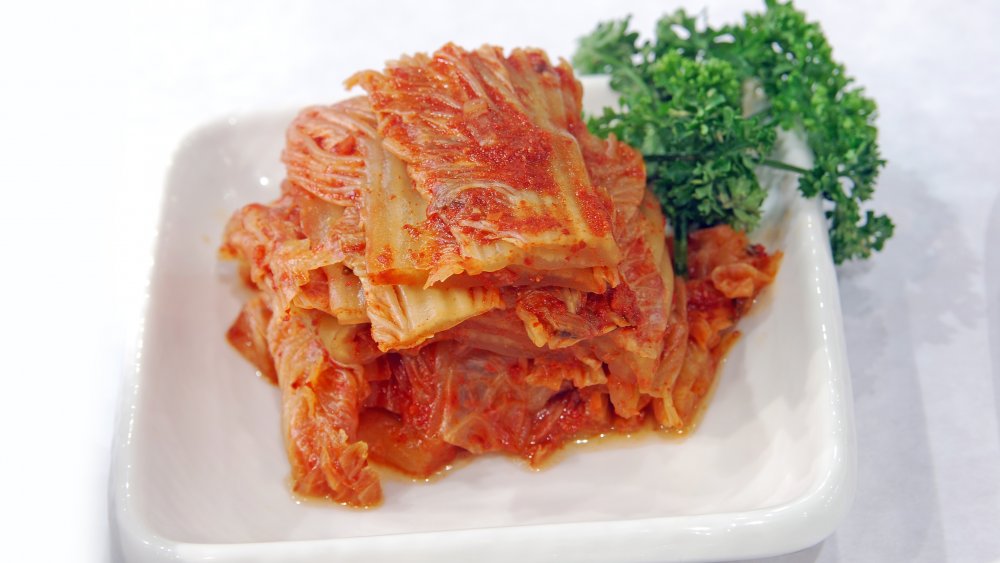The Important Difference Between Napa Cabbage And Regular Cabbage
When we think of cabbage, the type that often comes first to mind is the one called green cabbage. Typically one of the cheaper types of leafy vegetables, green cabbage consists of leaves densely packed into a tight, heavy, round — and yes, green — ball. Napa cabbage, which also goes by the names of Chinese cabbage and celery cabbage, has longer, paler green leaves and The Spruce Eats characterizes it as looking like a cross between Romaine lettuce and Swiss chard.
While the contrast in appearance between the two types of cabbage is important to know, in order to make sure you've got the right kind in your shopping cart, the main difference between them lies primarily in their texture, as this factor determines how each one is used.
Cooking with regular, or green, cabbage
Green cabbage, when raw, has what The Kitchn describes as a peppery taste, one which mellows into sweetness as it cooks. It is used as the base for most types of slaw as its sturdy leaves can stand up to the heaviest of dressings. Green cabbage can also be fermented to make sauerkraut, and it is robust enough to hold up to roasting and even grilling (via Bon Appetit). And of course, what St. Patrick's Day would be complete without that most iconic of Irish (or Irish-American, at least) dishes, corned beef with boiled cabbage?
Green cabbage offers numerous health benefits such as being high in vitamin C and helping to lower cholesterol, but it does have one significant downside — it is notorious for causing flatulence, so it is perhaps not the best thing to serve on a first date.
Cooking with Napa cabbage
Napa cabbage is the tenderest cabbage variety, and is the one that most closely resembles lettuce in texture as well as appearance. As such, it is excellent in salads, although it does tend to wilt quickly, so Napa cabbage salads must be served shortly after being prepared.
Napa cabbage is also typically used in kimchi, stir-fries, and dumpling fillings, but is too light to hold up to baking or roasting. As one commenter on a Food52 forum suggested, it is likely to become mushy if you try cooking it by these methods. Still, though, the idea of a corned beef and Napa cabbage Chinese-Irish fusion stir fry for next St. Patrick's Day — or for the Chinese New Year — may be worth trying out.


